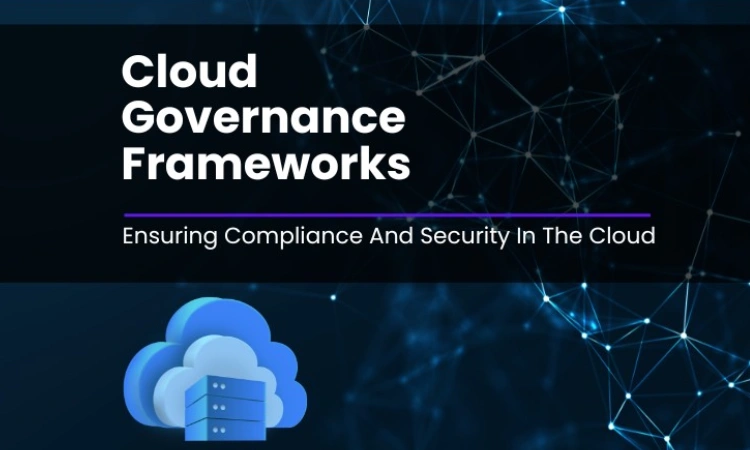In recent years, the adoption of cloud computing has skyrocketed, offering businesses unparalleled flexibility, scalability, and efficiency. However, with this rapid adoption comes the critical need for robust governance frameworks to ensure compliance, security, and overall risk management. Cloud governance frameworks play a pivotal role in helping organizations navigate the complexities of the cloud environment while maintaining control and security over their data and operations.
Understanding Cloud Governance
Cloud governance refers to the set of policies, procedures, and controls put in place to ensure that cloud services are used effectively, securely, and in compliance with regulatory requirements. As organizations move their data and applications to the cloud, effective governance becomes paramount to mitigate risks associated with data breaches, compliance violations, and operational disruptions.
The Need For Cloud Governance Frameworks
- Compliance Requirements : Various industries have stringent regulatory requirements governing data handling and privacy. A robust cloud governance framework ensures that organizations comply with these regulations, such as GDPR, HIPAA, or PCI-DSS, even in a cloud environment.
- Security Concerns : Security breaches in the cloud can have severe consequences. Governance frameworks help enforce security policies, access controls, encryption standards, and monitoring mechanisms to safeguard sensitive data and prevent unauthorized access.
- Cost Management : Cloud services can quickly escalate costs if not managed properly. Governance frameworks establish controls for resource allocation, budgeting, and optimization to ensure cost-effectiveness.
- Risk Management : Identifying and managing risks associated with cloud adoption is crucial. Governance frameworks provide risk assessment methodologies, contingency planning, and incident response procedures to mitigate potential threats.
Key Components Of Cloud Governance Frameworks
- Policies and Procedures : Establishing clear policies and procedures governing cloud usage, data handling, access controls, and acceptable use guidelines.
- Compliance Management : Ensuring adherence to regulatory requirements by implementing controls for data privacy, retention, and compliance reporting.
- Security Controls : Implementing robust security measures such as encryption, multi-factor authentication, identity and access management (IAM), and regular security audits.
- Risk Management : Conducting risk assessments, defining risk tolerance levels, and implementing controls to mitigate identified risks.
- Resource Management : Optimizing cloud resources to manage costs effectively, including monitoring usage, rightsizing instances, and implementing automated scaling.
- Vendor Management : Establishing criteria for selecting cloud service providers, managing vendor relationships, and ensuring contractual compliance.
Popular Cloud Governance Frameworks
- Cloud Security Alliance (CSA) Cloud Controls Matrix (CCM) : Provides a set of controls based on security best practices and industry standards, helping organizations assess the security posture of cloud providers.
- National Institute of Standards and Technology (NIST) Cybersecurity Framework : Offers guidelines for managing cybersecurity risk, including the protection of cloud-based systems and data.
- ISO/IEC 27001 : Defines standards for information security management systems, including cloud-related security controls and risk management practices.
- Center for Internet Security (CIS) Controls : Offers a prioritized set of best practices for cybersecurity, including controls specific to cloud environments.
- AWS Well-Architected Framework : Provides best practices for designing and operating secure, resilient, and efficient cloud infrastructures on Amazon Web Services.
Implementing A Cloud Governance Framework
- Assessment : Evaluate existing cloud deployments, identify risks, and assess compliance requirements.
- Policy Development : Develop comprehensive policies and procedures aligned with organizational goals, regulatory requirements, and industry best practices.
- ecurity Measures : Implement security controls such as encryption, access controls, logging, and monitoring tools to protect cloud assets.
- Training and Awareness : Provide training and awareness programs to educate employees about cloud governance policies, security best practices, and their roles and responsibilities.
- Continuous Monitoring and Improvement : Regularly monitor cloud environments, conduct audits, and update governance frameworks to address evolving threats and compliance requirements.
Cloud governance frameworks are essential for organizations to effectively manage risks, ensure compliance, and maintain security in the cloud. By implementing robust governance practices and leveraging established frameworks, businesses can harness the full potential of cloud computing while safeguarding their data, operations, and reputation. As cloud adoption continues to grow, investing in cloud governance becomes imperative for long-term success in today’s digital landscape.

